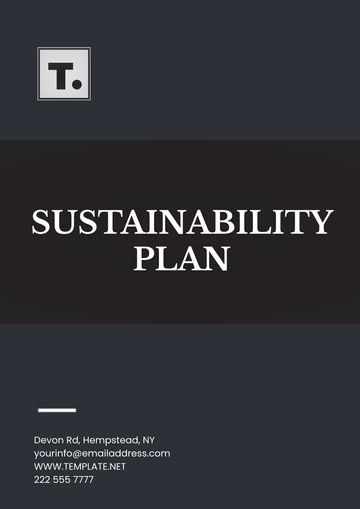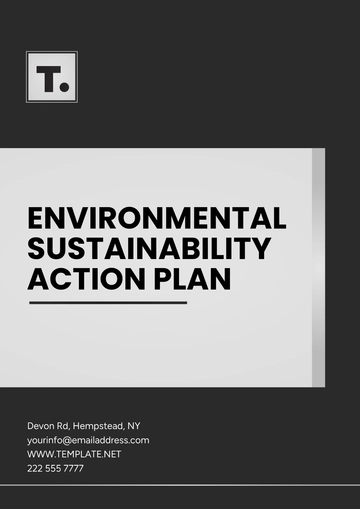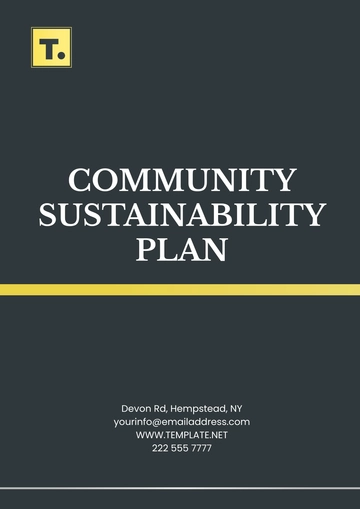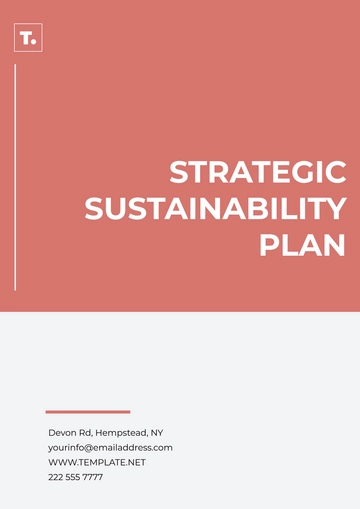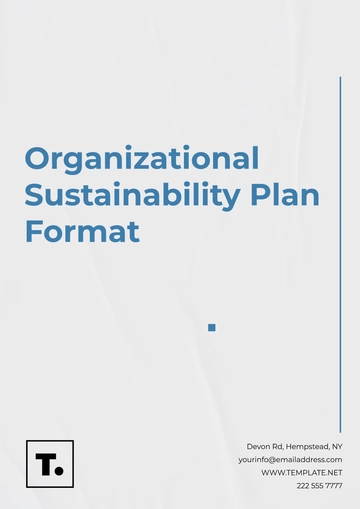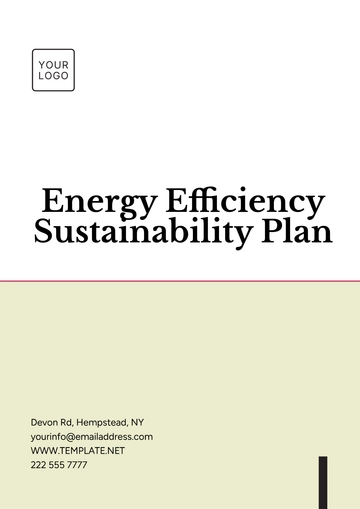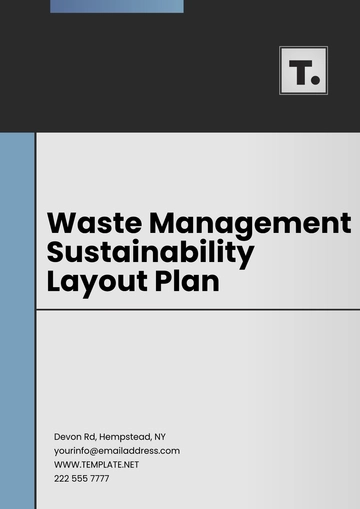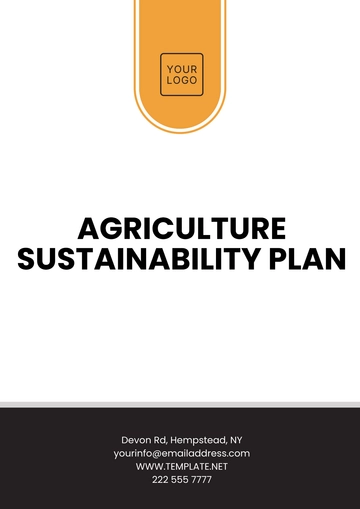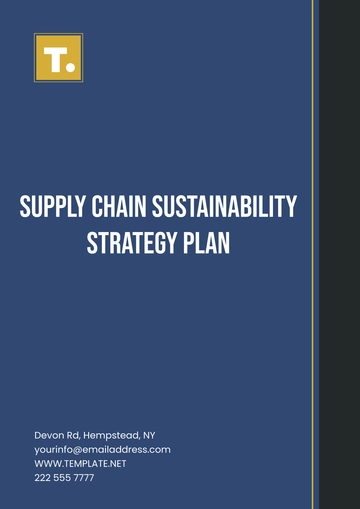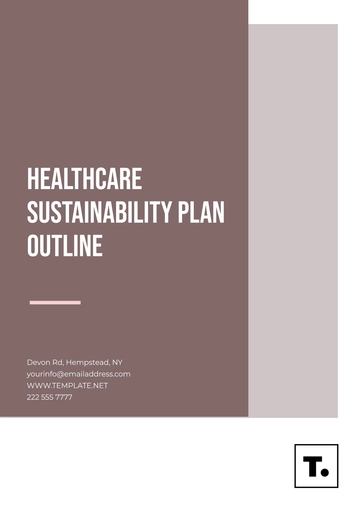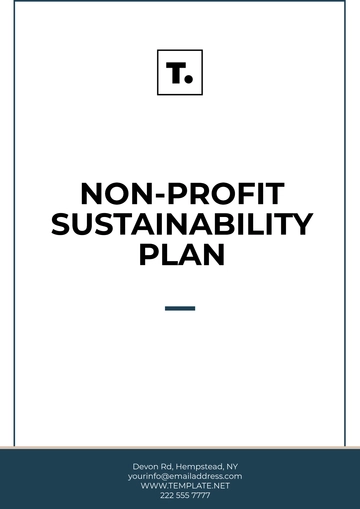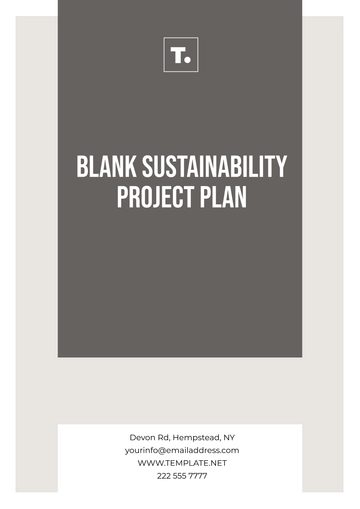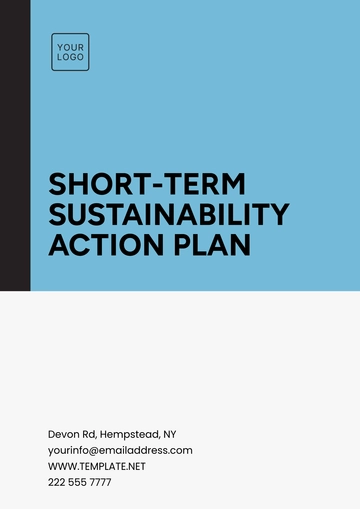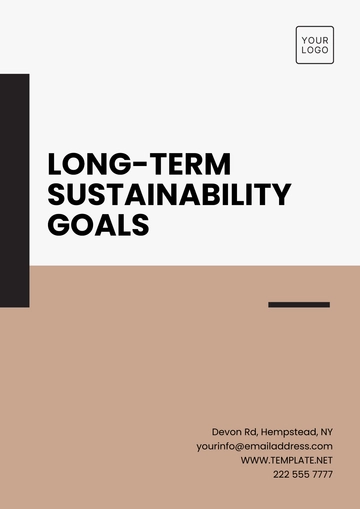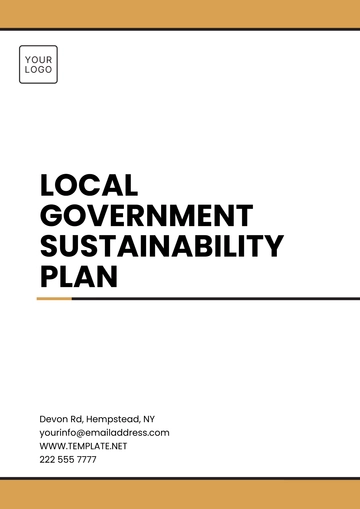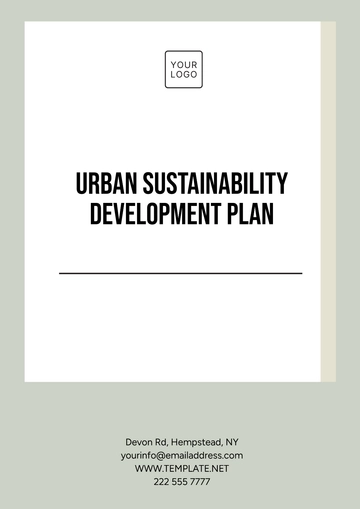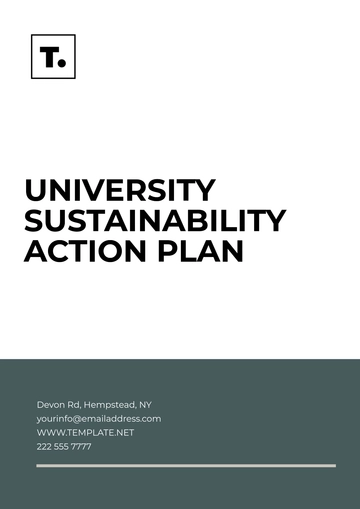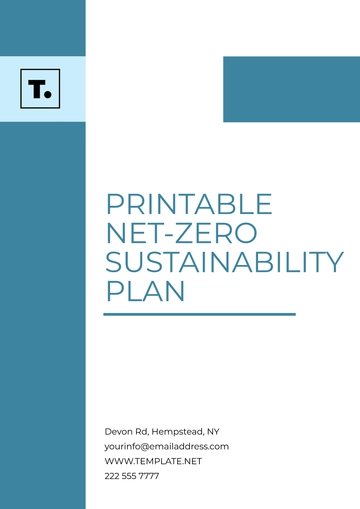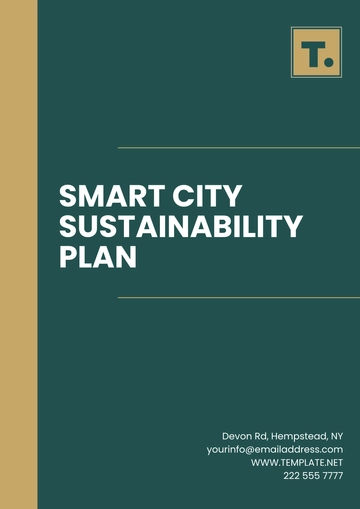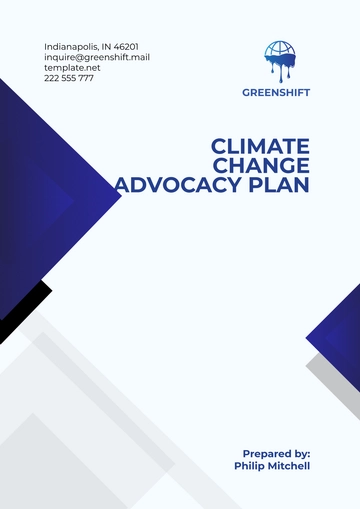Free Environmental Sustainability Plan
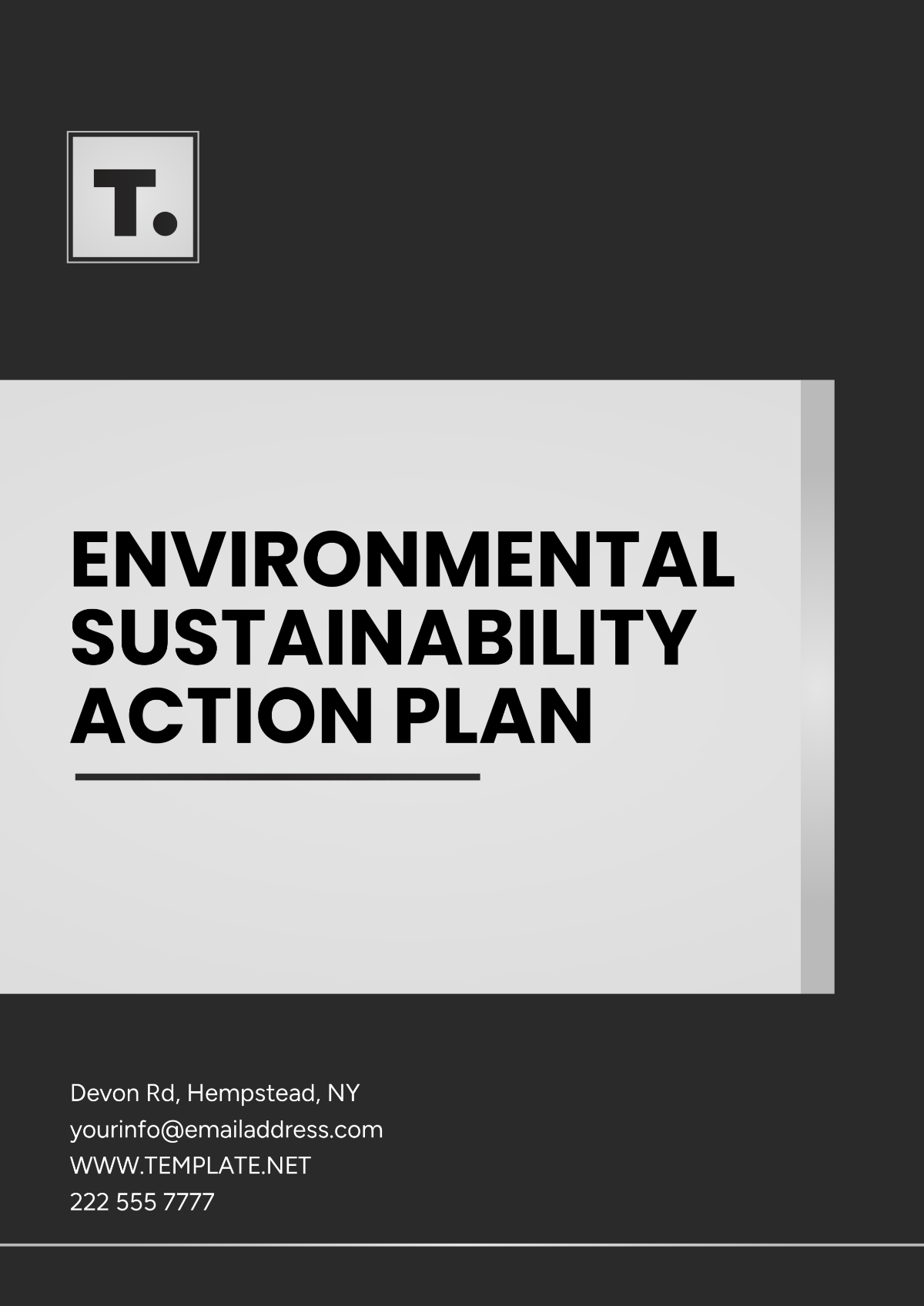
Date: [Date]
Prepared By: [Your Name]
Executive Summary
This action plan presents a comprehensive strategy designed to guide organizations in reducing their environmental footprint, conserving vital natural resources, and fostering eco-friendly practices. The goal is to cultivate a culture of sustainability within the organization, ensuring that long-term environmental goals align with operational efficiency and societal responsibility. By adopting these initiatives, organizations will contribute significantly to a greener, more sustainable future.
Objectives
The core objectives of this plan include:
Carbon Footprint Reduction: Significantly reducing the carbon footprint of organizational activities.
Waste Management and Recycling: Establishing comprehensive waste management systems that prioritize recycling and minimize waste generation.
Resource Efficiency: Optimizing the sustainable use of resources, including energy, water, and materials, across all operations.
Situation Analysis
Environmental Impact Assessment
A detailed evaluation will be conducted to assess the organization’s current environmental impact. This will involve identifying areas with the highest environmental burden and exploring potential for improvement. The assessment will consider factors like energy consumption, waste generation, and resource depletion, creating a baseline for future improvements.
Resource Utilization Review
A thorough review of current resource consumption patterns—focusing on energy, water, and raw materials—will provide insight into areas where reductions are feasible. This review will also assess inefficiencies and identify opportunities for operational adjustments that will lead to more sustainable practices.
Strategy Development
Carbon Footprint Reduction
To lower emissions, the plan outlines the following initiatives:
Energy Efficiency: Implement energy-saving practices, from office lighting and heating to optimizing machinery and equipment.
Renewable Energy: Transition to renewable energy sources, such as solar or wind power, to reduce reliance on fossil fuels.
Sustainable Transportation: Promote alternatives to conventional commuting, such as using public transport, carpooling, or adopting electric vehicle fleets.
Waste Management and Recycling
To foster a circular economy, the organization will:
Recycling Programs: Establish accessible and effective recycling systems for paper, plastics, metals, and electronic waste.
Reduction of Single-Use Products: Promote policies to reduce or eliminate single-use plastics and packaging.
Composting: Develop an organic waste management system, including composting facilities for food scraps and garden waste.
Water Conservation
Efficient water use will be achieved by implementing the following strategies:
Low-Flow Fixtures: Install water-efficient fixtures, including low-flow faucets, toilets, and appliances.
Leak Detection: Introduce regular water usage monitoring to quickly identify leaks or areas of excessive consumption.
Rainwater Harvesting: Implement rainwater collection systems to reduce dependency on municipal water supplies for irrigation and non-potable uses.
Implementation Plan
Timeline
Milestone | Start Date | End Date |
|---|---|---|
Assessment Phase | January 2054 | March 2054 |
Strategy Development | April 2054 | June 2054 |
Implementation | July 2054 | December 2054 |
Review and Adjustment | January 2055 | March 2055 |
Responsibilities
Clear roles and responsibilities will be assigned to departments and individuals, ensuring that all stakeholders are accountable for their actions. The plan will outline specific tasks for each team, with deadlines and performance indicators to track progress and ensure effective execution.
Monitoring and Evaluation
A robust system for monitoring and evaluating the action plan will be established, including key performance indicators (KPIs) for each strategy. This will enable the organization to track progress, measure success, and make data-driven adjustments as necessary. Regular reviews will ensure the continuous improvement of sustainable practices.
Conclusions
This action plan offers a structured approach for organizations committed to reducing their environmental impact and adopting sustainable practices. By implementing the strategies outlined, organizations will contribute to global sustainability efforts, enhance their environmental stewardship, and create a positive legacy for future generations. With strong leadership, clear accountability, and a focus on continuous improvement, significant strides toward sustainability will be achieved.
- 100% Customizable, free editor
- Access 1 Million+ Templates, photo’s & graphics
- Download or share as a template
- Click and replace photos, graphics, text, backgrounds
- Resize, crop, AI write & more
- Access advanced editor
Achieve your sustainability goals with the Environmental Sustainability Plan Template offered by Template.net. This customizable, downloadable, and printable template ensures a seamless planning process. Designed for convenience, it is fully editable in our AI Editor Tool, allowing you to tailor it to your specific needs. Start building an eco-friendly future today!
You may also like
- Finance Plan
- Construction Plan
- Sales Plan
- Development Plan
- Career Plan
- Budget Plan
- HR Plan
- Education Plan
- Transition Plan
- Work Plan
- Training Plan
- Communication Plan
- Operation Plan
- Health And Safety Plan
- Strategy Plan
- Professional Development Plan
- Advertising Plan
- Risk Management Plan
- Restaurant Plan
- School Plan
- Nursing Home Patient Care Plan
- Nursing Care Plan
- Plan Event
- Startup Plan
- Social Media Plan
- Staffing Plan
- Annual Plan
- Content Plan
- Payment Plan
- Implementation Plan
- Hotel Plan
- Workout Plan
- Accounting Plan
- Campaign Plan
- Essay Plan
- 30 60 90 Day Plan
- Research Plan
- Recruitment Plan
- 90 Day Plan
- Quarterly Plan
- Emergency Plan
- 5 Year Plan
- Gym Plan
- Personal Plan
- IT and Software Plan
- Treatment Plan
- Real Estate Plan
- Law Firm Plan
- Healthcare Plan
- Improvement Plan
- Media Plan
- 5 Year Business Plan
- Learning Plan
- Marketing Campaign Plan
- Travel Agency Plan
- Cleaning Services Plan
- Interior Design Plan
- Performance Plan
- PR Plan
- Birth Plan
- Life Plan
- SEO Plan
- Disaster Recovery Plan
- Continuity Plan
- Launch Plan
- Legal Plan
- Behavior Plan
- Performance Improvement Plan
- Salon Plan
- Security Plan
- Security Management Plan
- Employee Development Plan
- Quality Plan
- Service Improvement Plan
- Growth Plan
- Incident Response Plan
- Basketball Plan
- Emergency Action Plan
- Product Launch Plan
- Spa Plan
- Employee Training Plan
- Data Analysis Plan
- Employee Action Plan
- Territory Plan
- Audit Plan
- Classroom Plan
- Activity Plan
- Parenting Plan
- Care Plan
- Project Execution Plan
- Exercise Plan
- Internship Plan
- Software Development Plan
- Continuous Improvement Plan
- Leave Plan
- 90 Day Sales Plan
- Advertising Agency Plan
- Employee Transition Plan
- Smart Action Plan
- Workplace Safety Plan
- Behavior Change Plan
- Contingency Plan
- Continuity of Operations Plan
- Health Plan
- Quality Control Plan
- Self Plan
- Sports Development Plan
- Change Management Plan
- Ecommerce Plan
- Personal Financial Plan
- Process Improvement Plan
- 30-60-90 Day Sales Plan
- Crisis Management Plan
- Engagement Plan
- Execution Plan
- Pandemic Plan
- Quality Assurance Plan
- Service Continuity Plan
- Agile Project Plan
- Fundraising Plan
- Job Transition Plan
- Asset Maintenance Plan
- Maintenance Plan
- Software Test Plan
- Staff Training and Development Plan
- 3 Year Plan
- Brand Activation Plan
- Release Plan
- Resource Plan
- Risk Mitigation Plan
- Teacher Plan
- 30 60 90 Day Plan for New Manager
- Food Safety Plan
- Food Truck Plan
- Hiring Plan
- Quality Management Plan
- Wellness Plan
- Behavior Intervention Plan
- Bonus Plan
- Investment Plan
- Maternity Leave Plan
- Pandemic Response Plan
- Succession Planning
- Coaching Plan
- Configuration Management Plan
- Remote Work Plan
- Self Care Plan
- Teaching Plan
- 100-Day Plan
- HACCP Plan
- Student Plan
- Sustainability Plan
- 30 60 90 Day Plan for Interview
- Access Plan
- Site Specific Safety Plan
